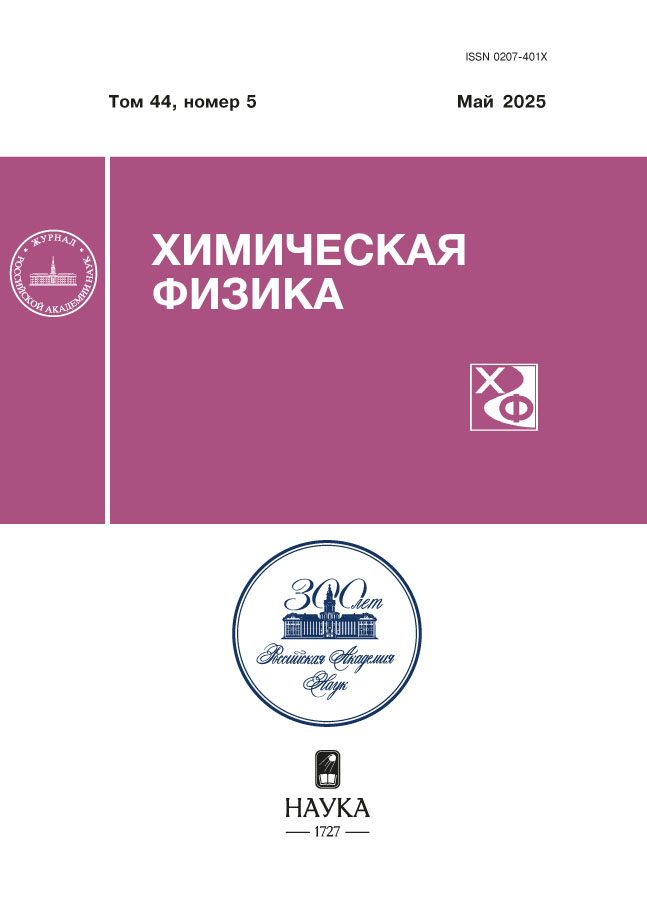Silicon surface modification with low-energy broad ion beam
- Авторлар: Kolchina L.M.1
-
Мекемелер:
- Institute of Nanotechnology of Microelectronics of the Russian Academy of Sciences
- Шығарылым: Том 44, № 5 (2025)
- Беттер: 15-22
- Бөлім: СТРОЕНИЕ ХИМИЧЕСКИХ СОЕДИНЕНИЙ, КВАНТОВАЯ ХИМИЯ, СПЕКТРОСКОПИЯ
- URL: https://transsyst.ru/0207-401X/article/view/683909
- DOI: https://doi.org/10.31857/S0207401X25050028
- ID: 683909
Дәйексөз келтіру
Аннотация
Broad ion beam etching by Ar⁺ with low energy up to 1000 eV has been utilized to modify physicochemical properties of the monocrystalline Silicon (100) surface. The silicon surface modification results in etching delay time during its vacuum-plasma etching in a SF₆/O₂/Ar mixture. The etching delay time of the modified Silicon has been found to be significantly affected by conditions of preliminary silicon treatment with the ion beam such as the ion energy and the ion incidence angle. The enhancement in the etching delay time has been detected while lower ion energy and higher ion incidence angle are applied. The combination of the ion beam etching and the vacuum plasma etching could be concerned as the suitable way to form silicon structures.
Негізгі сөздер
Толық мәтін
Авторлар туралы
L. Kolchina
Institute of Nanotechnology of Microelectronics of the Russian Academy of Sciences
Хат алмасуға жауапты Автор.
Email: Ludmila.Kolchina@yandex.ru
Ресей, Moscow
Әдебиет тізімі
- Cao T., Hu T., Zhao Y. // Micromachines. 2020. V. 11. P. 694. https://doi.org/10.3390/mi11070694
- Hossain N., Al Mahmud Md Z., Hossain A. et al. // Results Eng. 2024. V. 22. P. 102115. https://doi.org/10.1016/j.rineng.2024.102115
- Tozihi M., Zarringari S.S. // Russ. J. Phys. Chem. B. 2023. V. 17. № 5. P. 1034. https://doi.org/10.1134/S1990793123050123
- Lukin L.V. // Russ. J. Phys. Chem. B. 2023. V. 17. № 6. P. 1300. https://doi.org/10.1134/S1990793123060180
- Martirosyan V., Despiau-Pujo E., Dubois J. et al. // J. Vac. Sci. Technol. A. 2018. V. 36. P. 041301. https://doi.org/10.1116/1.5025152
- Baldin E.D., Vorobieva G.A., Kolbanev I.V. et al. // Russ. J. Phys. Chem. B. 2024.V. 18. № 1. P. 203. https://doi.org/10.1134/S1990793124010056
- Kochetov N.A., Kovalev I.D. // Russ. J. Phys. Chem. B. 2024. V. 18. № 2. P. 485. https://doi.org/10.1134/S1990793124020106
- Shandyba N., Balakirev S., Sharov V. et al. // Int. J. Mol. Sci. 2023. V. 24. P. 224. https://doi.org/10.3390/ijms24010224
- Qian H.X., Zhou W., Miao J. et al. // J. Micromech. Microeng. 2008. V. 18. P. 035003. https://doi.org/10.1088/0960-1317/18/3/035003
- Henry M.D., Shearn M.J., Chhim B., Scherer A. // Nanotechnology. 2010. V. 21. P. 245303. https://doi.org/10.1088/0957-4484/21/24/245303
- Fischer A.C., Belova L.M., Rikers Y.G.M. et al. // Adv. Funct. Mater. 2012. V. 22. P. 4004. https://doi.org/10.1002/adfm.201200845
- Brugger J., Beljakovic G., Despont M. et al. // Microeletron. Eng. 1997. V. 35. P. 401. https://doi.org/10.1016/s0167-9317(96)00210-9
- Sievila P., Chekurov N., Tittonen I. // Nanotechnology. 2010. V. 21. P. 145301. https://doi.org/10.1088/0957-4484/21/14/145301
- Robins A.C., Cerchiara R.R., Fischione P.E. et al. // J. Phys. Conf. Ser. 2013. V. 471. P. 012046. https://doi.org/10.1088/1742-6596/471/1/012046
- Harper J.M.E., Cuomo J.J., Kaufman H.R. // Ann. Rev. Mater. Sci. 1983.V. 13. P. 413. https://doi.org/10.1146/annurev.ms.13.080183.002213
- Lee R.E. VLSI electronics: microstructure science. V. 8. Academic Press, Inc., 1984. https://doi.org/10.1016/b978-0-12-234108-3.50016-9
- Sawyer W.D., Weber J., Nabert G. et al. // J. Appl. Phys. 1990. V. 68. P. 6179. https://doi.org/10.1063/1.346908
- Chason E., Picraux S.T., Poate J.M. et al. // J. Appl. Phys. 1997. V. 81. P. 6513. https://doi.org/10.1063/1.365193
- Howitt D.G. // J. Electron Microsc. Tech. 1984. V. 1. P. 405. https://doi.org/10.1002/jemt.1060010409
- Helmer B.A., Graves D.B. // J. Vac. Sci. Technol. A. 1998. V. 16. P. 3502. https://doi.org/10.1116/1.580993
- Valov A.F., Avetisov V.A. // Russ. J. Phys. Chem. B. 2022. V. 16. № 3. P. 474. https://doi.org/10.1134/S1990793122030101
- Buttari D., Chini A., Palacios T. et al. // Appl. Phys. Lett. 2003. V. 83. P. 4779. https://doi.org/10.1063/1.1632035
- Mikhailenko M.S., Pestov A.E., Chkhalo N.I. et al. // Appl. Optics. 2022. V. 61. № 10. P. 2825. https://doi.org/10.1364/AO.455096
- Takenaka H., Oishi Y., Ueda D. // J. Vac. Sci. Technol. B. 1994. V. 12. P. 3107. https://doi.org/10.1116/1.587486
- Wu H., Cargo J. // Proc. 28th Int. Symp. Testing and Failure Analysis. Materials Park, Ohio, USA: ASM Int. 2002. P. 675. https://doi.org/10.31399/asm.cp.istfa2002p0675
- Ross R. J. Microelectronics Failure Analysis, Desk Reference. Sixth Edition. Ohio, USA. ASM Int., 2011.
Қосымша файлдар











